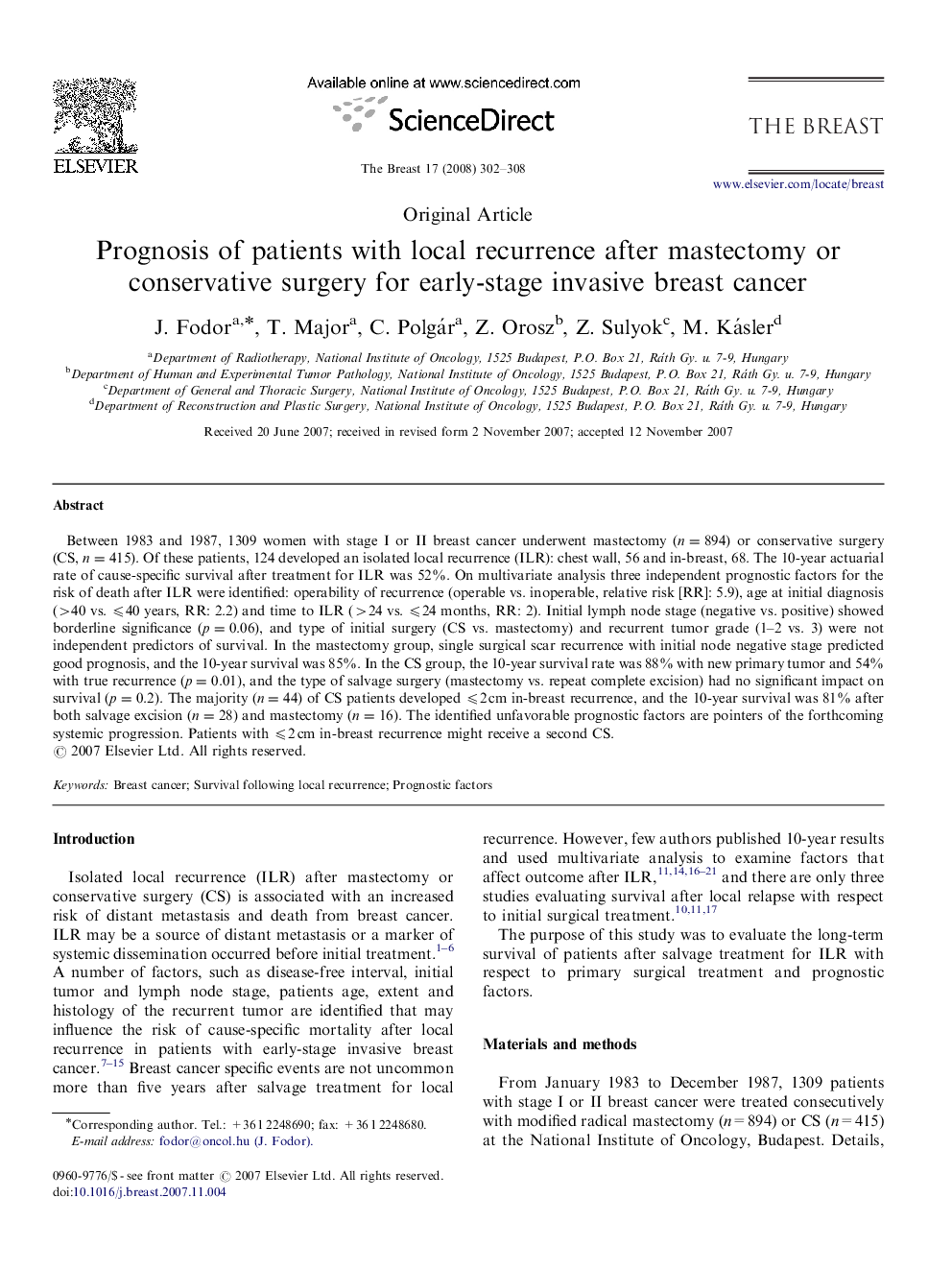| Article ID | Journal | Published Year | Pages | File Type |
|---|---|---|---|---|
| 3909896 | The Breast | 2008 | 7 Pages |
Between 1983 and 1987, 1309 women with stage I or II breast cancer underwent mastectomy (n=894) or conservative surgery (CS, n=415). Of these patients, 124 developed an isolated local recurrence (ILR): chest wall, 56 and in-breast, 68. The 10-year actuarial rate of cause-specific survival after treatment for ILR was 52%. On multivariate analysis three independent prognostic factors for the risk of death after ILR were identified: operability of recurrence (operable vs. inoperable, relative risk [RR]: 5.9), age at initial diagnosis (>40 vs. ⩽40 years, RR: 2.2) and time to ILR (>24 vs. ⩽24 months, RR: 2). Initial lymph node stage (negative vs. positive) showed borderline significance (p=0.06), and type of initial surgery (CS vs. mastectomy) and recurrent tumor grade (1–2 vs. 3) were not independent predictors of survival. In the mastectomy group, single surgical scar recurrence with initial node negative stage predicted good prognosis, and the 10-year survival was 85%. In the CS group, the 10-year survival rate was 88% with new primary tumor and 54% with true recurrence (p=0.01), and the type of salvage surgery (mastectomy vs. repeat complete excision) had no significant impact on survival (p=0.2). The majority (n=44) of CS patients developed ⩽2 cm in-breast recurrence, and the 10-year survival was 81% after both salvage excision (n=28) and mastectomy (n=16). The identified unfavorable prognostic factors are pointers of the forthcoming systemic progression. Patients with ⩽2 cm in-breast recurrence might receive a second CS.
